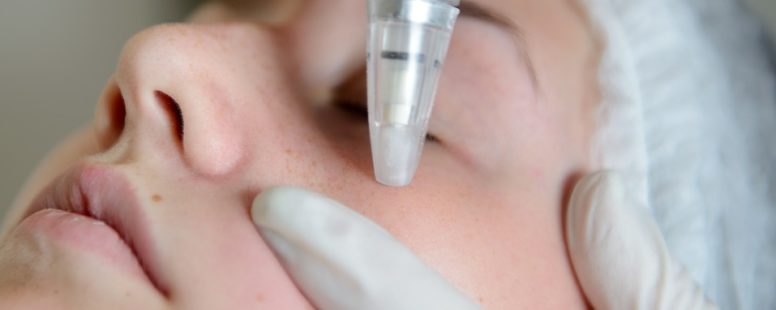The Magic of Microdermabrasion and Dermaplaning
Microdermabrasion and Dermaplaning
In order to achieve a more flawless face, both men and women often turn to microdermabrasion and dermaplaning. Aestheticians can use these procedures together or separately. As both of them exfoliate the top layers of the skin. What is the difference between the two?
Microdermabrasion
The aesthetician uses a wand that blows a fine stream of crystals against the areas of the clients face. The crystals are simply baking soda or aluminum oxide. These crystals loosen the dead and dry flakes of skin. Aestheticians use a small vacuum like tube that sucks up the loosened skin. Microdermabrasion also stimulates the body to produce not only more new, succulent skin cells but more elastin and collagen. These are two proteins that form a type of springy basement beneath the skin to keep it supple. The production of these proteins tends to diminish as a person gets older.
People who are good candidates for microdermabrasion are in good overall health and have minor skin problems. For example, small scars, fine lines, acne, mild acne scars, rosacea and rough or uneven skin texture. It is not recommended for those who have active keloids, deep scars, a recent outbreack of herpes, or warts on the face. Pregnant women should not undergo the procedure as well. People who’ve just had an eruption of herpes and pregnant women should also avoid it. Patients who have recently had a chemical peel or more invasive facial procedure should avoid microdermbrasion.
Microdermabrasion isn’t painful. A patient will need a few treatments spaced at least two weeks apart before they really start to see results. A session lasts from 30 minutes to an hour.
There is no downtime with microdermabrasion. The patient can return to their usual activities right after they leave the dermatologist’s or aesthetician’s office. The clients skin may be tender, but this can be soothed with moisturizer. Redness can be concealed with makeup. The patient should avoid the sun for at least a few days or wear sunscreen if they do need to go outside.
Dermaplaning
In dermaplaning, the dermatologist uses a scalpel to “shave” dead skin cells and even unwanted vellus hairs from the face. This is not as alarming as it seems, for dermaplaning, like microdermabrasion, is fairly painless. Indeed, some people claim it is gentler than microdermabrasion.
Instead of the dead cells being removed by a blast of microcrystals, they are removed with a sterilized surgical scalpel wielded by a trained medical professional. Like microdermabrasion, this encourages the body to lay down more elastin and collagen and leaves the skin smooth, glowing and youthful. Each dermaplaning session takes about a half an hour. Afterward, the dermatologist soothes the patient’s face with a cooling mask. Patients come in for one treatment then return for a touch-up in three weeks or so.
Dermaplaning is good for people whose skin has uneven pigmentation or has grown rough or dry due to sun damage or aging. Unlike microdermabrasion, it is good for pregnant and nursing women. However, people who have very thick, oily skin or who’ve had a recent acne outbreak should not choose dermaplaning. Aestheticians can use this procedure in conjunction with microdermabrasion. Especially since it does remove the “peach fuzz” that microdermabrasion leaves behind. Results can last 4 weeks to 6 months!

